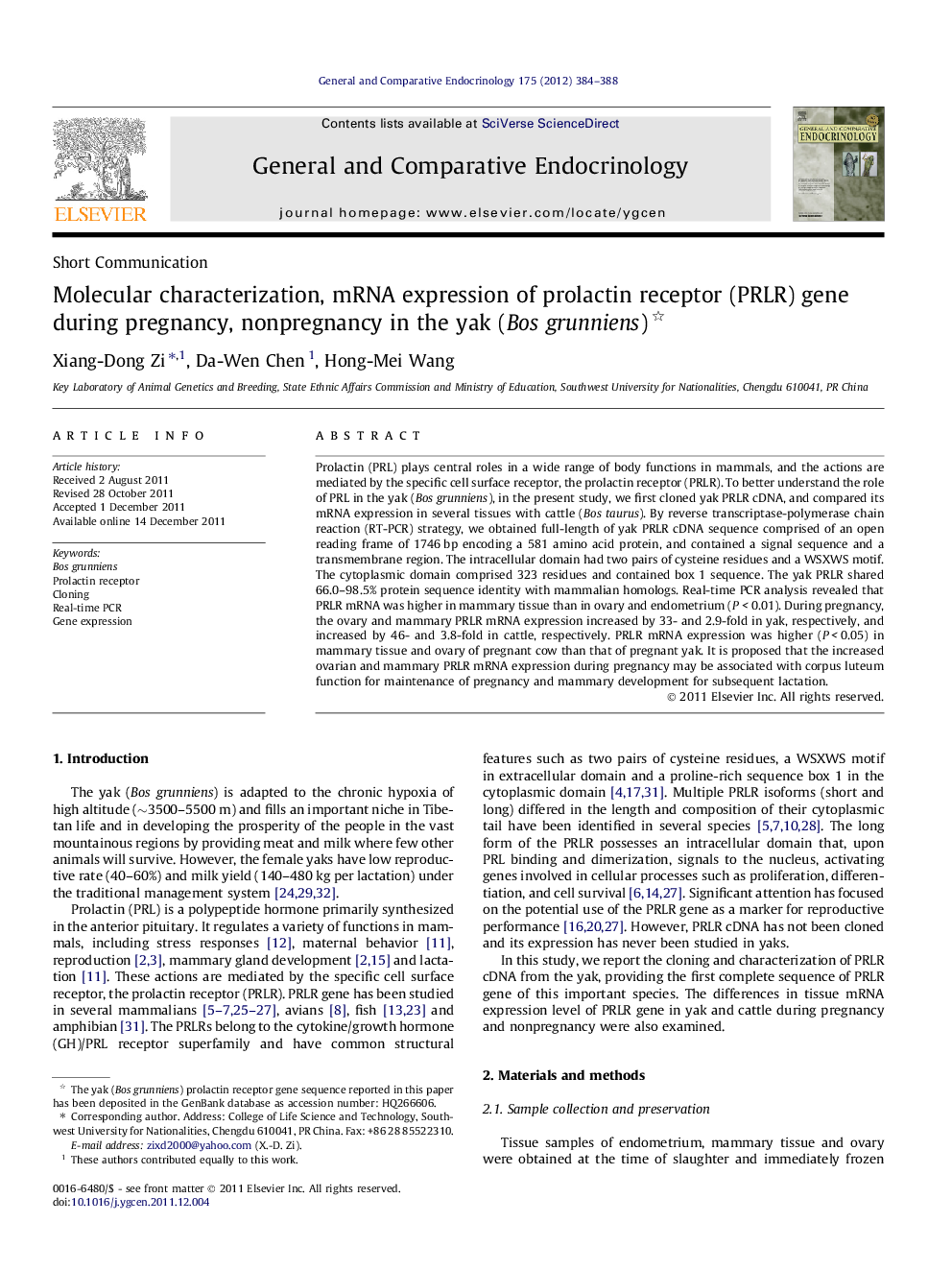| Article ID | Journal | Published Year | Pages | File Type |
|---|---|---|---|---|
| 2800637 | General and Comparative Endocrinology | 2012 | 5 Pages |
Prolactin (PRL) plays central roles in a wide range of body functions in mammals, and the actions are mediated by the specific cell surface receptor, the prolactin receptor (PRLR). To better understand the role of PRL in the yak (Bos grunniens), in the present study, we first cloned yak PRLR cDNA, and compared its mRNA expression in several tissues with cattle (Bos taurus). By reverse transcriptase-polymerase chain reaction (RT-PCR) strategy, we obtained full-length of yak PRLR cDNA sequence comprised of an open reading frame of 1746 bp encoding a 581 amino acid protein, and contained a signal sequence and a transmembrane region. The intracellular domain had two pairs of cysteine residues and a WSXWS motif. The cytoplasmic domain comprised 323 residues and contained box 1 sequence. The yak PRLR shared 66.0–98.5% protein sequence identity with mammalian homologs. Real-time PCR analysis revealed that PRLR mRNA was higher in mammary tissue than in ovary and endometrium (P < 0.01). During pregnancy, the ovary and mammary PRLR mRNA expression increased by 33- and 2.9-fold in yak, respectively, and increased by 46- and 3.8-fold in cattle, respectively. PRLR mRNA expression was higher (P < 0.05) in mammary tissue and ovary of pregnant cow than that of pregnant yak. It is proposed that the increased ovarian and mammary PRLR mRNA expression during pregnancy may be associated with corpus luteum function for maintenance of pregnancy and mammary development for subsequent lactation.
► We cloned, characterized, and examined mRNA expression of yak PRLR gene. ► The yak PRLR cDNA sequence comprised of 1746 bp encoding a 581 amino acid protein. ► The predicted PRLR protein belongs to the cytokine/GH/PRL receptor superfamily. ► Ovarian and mammary PRLR mRNA expression significantly increased during pregnancy. ► PRLR appears to be important in maintaining pregnancy and mammary function in yaks.
